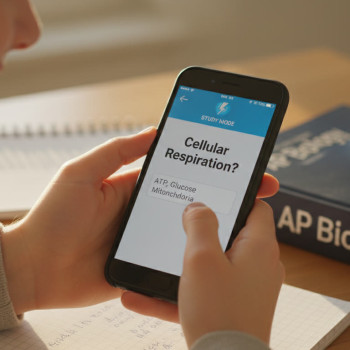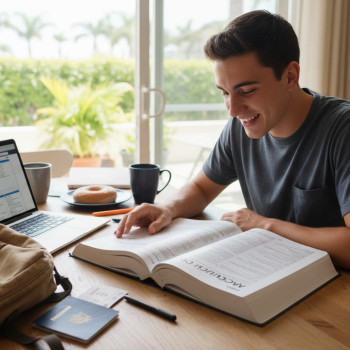Introduction: You’re Not Alone — Practical Help for a Big Day
AP exam season can feel like a storm of schedules, supplies, and emotions. As a parent, you want to be helpful without hovering, steady without being anxious. This guide is written for you: sensible, warm, and full of concrete checklists you can use in the two weeks, two days, and the morning before each AP test. Think of it as your calm, practical playbook — the one you pull out and follow so your student can walk into the testing room confident and ready.

How To Use This Guide
This article is organized by timeline: two weeks before, three days before, the night before, and the morning of an AP exam. Each section contains a packing list, prep tasks, and gentle coaching tips you can use to support your teen without taking over. There’s also a table you can print and a short plan for anyone considering extra help like one-on-one tutoring.
Why Timelines Matter
AP exams are mental marathons. Rushing the evening before often causes avoidable stress. Staggering tasks — logistical, academic, and emotional — over days creates rhythm and helps your child build steady confidence.
Two Weeks Before: Logistics, Strategy, and Calm Foundations
This is when systems win. Focus on registration, understanding the exam format, and building a realistic revision rhythm.
Parent Checklist — Two Weeks Out
- Confirm exam dates, times, and locations from school communications and your teen’s schedule.
- Ask your child which AP exams they’re taking and what components each contains (multiple choice, free response, practical).
- Download or print any official practice materials your child wants to use; set one clear study goal for each week.
- Schedule quiet, distraction-free study blocks: 45–90 minutes with short breaks.
- Plan transportation and timing for exam day — leave a margin for traffic, parking, and check-in.
- Stock up on school supplies (see packing list below).
- Discuss sleep goals: aim for consistent bedtimes so sleep debt isn’t a factor.
Packing List — Two Weeks Prep (buy or gather)
- Several #2 pencils and mechanical pencils with extra lead (for exams allowing mechanical pencils, verify with test rules).
- Erasers (white vinyl preferred) and a small pencil sharpener.
- Approved calculator (if applicable) — with fresh batteries and backup batteries.
- Timeless analog watch (no smart features) or a silent wristwatch if allowed at your testing center.
- Photo ID, admission ticket or school ID if required, and two punches of identification if the school requests them.
- Plain snacks and water for after the test (testing rooms usually do not allow food during the exam).
- Comfortable layers: a sweater or hoodie in case rooms are chilly.
- Hand sanitizer and tissues.
Three Days Before: Practice Exams and Emotional Prep
Use a few full or half-length practice sections to normalize pacing and question types. This is also a great time to practice stress-management tools.
Parent Checklist — Three Days Out
- Encourage one full practice section under realistic timing (don’t do this the night before).
- Talk through exam logistics calmly: where check-in will be, how long breaks are, and what happens if something small goes wrong (late bus, lost pencil).
- Create a calm environment: reduce evening obligations and try a screen curfew an hour before bedtime.
- Offer a short, distraction-free study session with your teen — not to teach, but to help them outline a small plan.
- Check calculators, batteries, pens, pencils, and ID documents again.
Academic Tips to Share
- Focus on weaknesses, not trying to relearn everything. One or two targeted practice problems per session is better than cramming new content.
- Review rubrics for free-response sections so your student knows what graders look for: clarity, structure, and evidence.
- Encourage active recall: flashcards, short quizzes, and teaching a concept out loud can cement knowledge.
The Night Before: Pack, Rest, and Reassure
This is the part where calm wins again. No last-minute content overload — just rituals, packing, and sleep hygiene.
Parent Checklist — Night Before
- Help your teen pack the exam bag from the checklist below and place items by the door.
- Lay out clothes to reduce morning decision-making (comfortable, layered, no loud logos).
- Offer a light, familiar dinner — nothing experimental that could upset an appetite.
- Encourage a wind-down routine: warm shower, light reading, breathing exercises, and a consistent bedtime.
- Remind them of logistics one last time — arrival time, location, what to bring, and what not to bring.
- Say something reassuring — short, genuine praise usually works best: “You’ve worked hard. I’m proud of you.”
Packing List — Final Exam Bag (Night Before)
- Admission ticket or printed confirmation (if required).
- Photo ID (school ID or other accepted ID).
- #2 pencils (5–8) and erasers; a small sharpener.
- Approved calculator with fresh batteries and spare batteries (if allowed).
- Black or blue pens (for answers that must be inked) — check the exam rules for specific format requirements.
- Comfortable layers, a light sweater, and a small plastic bag for personal items.
- Watch (no smart features) to pace time if allowed.
- Snack and water for after the test, not to be consumed during the exam unless permitted.
Morning Of: Gentle Routines and Confidence Boosters
The morning should be calm, timed, and gentle. Avoid news, heavy academic talk, or last-minute teaching.
Parent Checklist — Morning Of
- Prepare a simple, protein-rich breakfast and hydration (oatmeal, eggs, yogurt, fruit).
- Give a gentle reminder of arrival time and suggest leaving a 15–30 minute buffer for traffic and check-in.
- Offer practical calm: double-check the bag, confirm the water bottle is closed, and hand them their admission ticket and ID.
- Avoid loaded questions like “Are you sure you know everything?” Instead say, “You’ve got this. One step at a time.”
- Drop-off logistics: if you’re driving, plan to be there for a short hug and quick reassurance without lingering.
Quick Pre-Exam Rituals
- Two to three deep breaths in and out to slow heart rate.
- One quick visualized run-through: arrive, sit, read instructions, start — a simple mental map reduces anxiety.
- A one-sentence affirmation your teen chooses: it can be practical (“I’ll read every question twice”) or calming (“I can handle this”).
During the Exam: What You Can (and Can’t) Do
Parents can be support figures only outside the testing room. You can control the environment at home and offer emotional steadiness. Beyond that, allow testing staff and your teen to manage the test itself.
After the Exam
- Pick them up at an agreed time and give space for post-test emotions — relief, frustration, or quiet reflection.
- Celebrate small wins: a favorite snack, a walk, or letting them pick dinner. Avoid interrogations about performance.
- Reflect later: when emotions are neutral, ask what study strategies worked and what could be improved for future tests.
Printable Table: Quick-Reference Packing Checklist
Print this table and tape it to the fridge or slide it into a backpack. It’s a compact visual reminder of all essentials.
| Category | Item | Notes |
|---|---|---|
| Identification | Photo ID, Admission Ticket | Confirm acceptable IDs ahead of time |
| Writing Tools | #2 Pencils, Erasers, Pens | Bring extras; mechanical pencil leads if used |
| Calculator | Approved Calculator + Spare Batteries | Check exam rules for calculator models |
| Comfort | Sweater, Water Bottle, Snack (post-test) | Layered clothing for variable room temperatures |
| Timekeeping | Analog or Non-Smart Watch | Allowed in most centers; verify local rules |
| Hygiene | Tissues, Hand Sanitizer | Small supplies for comfort |
Common Questions Parents Ask
1. What if my teen lost their admission ticket or ID?
Contact the school testing coordinator immediately. Many centers have contingency plans, but the earlier they know, the better. Encourage your teen to arrive with whatever documentation they have and a calm explanation. Panic complicates the situation; your role is to help them arrive composed.
2. How strict are the rules about calculators and notes?
Rules vary by subject. Calculators are permitted only on certain exams and sometimes specific models are banned. Notes or cheat sheets are never allowed. Double-check the exam’s rules during the two-week window, and test any calculator during practice sessions so your child is comfortable with its functions.
3. How do I help my teen who gets test anxiety?
Normalize the anxiety: it’s a common physical reaction to high stakes. Teach short breathing exercises, encourage a rehearsal of logistics, and help them practice pacing with timed sections. If anxiety is severe, consider structured support like a few sessions with a tutor who specializes in test strategies and confidence-building. Personalized tutoring can provide one-on-one guidance, tailored study plans, and focused practice that reduces anxiety through preparedness.
How Personalized Tutoring Can Fit In (Subtle, Practical Uses)
Sometimes targeted support makes a tangible difference. If your student struggles with pacing, long-form essays, or a specific content area, a short series of personalized tutoring sessions can be a highly effective intervention. Tutors who offer tailored study plans and one-on-one guidance can help with exam-specific strategies, targeted practice, and feedback — especially in the two-to-four-week window before an exam.
For families considering additional help, here are ways to make tutoring practical and efficient:
- Ask the tutor to focus on exam strategy and time management rather than broad content review if time is short.
- Request model responses for free-response sections and actionable feedback on structure and evidence.
- Use a few sessions to rehearse under timed conditions and discuss pacing strategies.
- Choose tutors who provide clear study plans and progress checks so each session builds directly on the last.
Real-World Examples and Small Wins
Here are two brief examples of what parents and students did that helped.
Example 1: The Late Bloomer
A student realized two weeks before an AP exam that they had weak timing on multiple choice. Instead of cramming content, the tutor and student practiced timed 25-question blocks twice a day, analyzing which question types consumed the most time. After five sessions, the student identified two predictable sticking points and learned a quick elimination strategy. On test day, pacing felt manageable instead of frantic.
Example 2: The Essay Turnaround
A teen struggled to structure free-response essays. A tutor modeled a three-part approach: thesis, evidence, and analysis; then practiced two essays under timed conditions. Feedback emphasized concise evidence and smoother transitions. The student’s writing clarity improved and so did confidence going into the exam.
Emotional Support: What Parents Should Say (and Not Say)
Words matter. Choose short, grounded statements that validate effort and control only what you can — the logistics and emotional tone.
What Helps
- “You’ve prepared for this, and that preparation will show.”
- “I’m proud of the way you stuck with a plan.”
- “Tell me how I can make today easier.”
What to Avoid
- Don’t re-teach or quiz the night before — it increases anxiety.
- Avoid comparisons to siblings or friends; every student’s exam experience is different.
- Steer clear of overpromising outcomes — focus on effort, not score.
After the Exams: Reflection and Next Steps
Once scores are released (usually weeks after testing), sit down calmly with your child. Focus the conversation on learning — what study habits worked, what strategies to keep, and which areas to improve. If future AP exams are on the docket, use this data to refine the study plan. If college credit or admissions questions arise, gather information and decide whether to retake or accept scores together.
Closing Thoughts: Your Steady Presence Matters
AP exams are important, but they’re only one chapter in your child’s educational story. Your calm planning, practical checklists, and steady emotional presence on test day make an outsized difference. Prepare the logistics, limit last-minute content pushes, and help your student build confidence through routine and small wins. If you choose to add tailored, one-on-one support, use it to plug precise gaps — pacing, essay structure, or targeted content — and keep the focus on sustainable study habits.
Most of all, remember: your child is more than any single test. When the packing is done and the test is over, celebrate effort, rest up, and look forward to the next step together.

Quick Checklist Summary (Printable)
Keep this short summary on the fridge so it’s the last thing you see before the morning rush.
- Confirm exam time and location two weeks out.
- Practice timed sections three days before.
- Pack pencil case, ID, and calculator the night before.
- Encourage a light dinner and consistent bedtime; no last-minute cramming.
- Provide calm morning routines and a confident send-off.
- Celebrate effort after the test; reflect on strategies later.
Final Note
If you’d like a printable one-page checklist or a suggested two-week study schedule tailored to a specific AP subject, I can create one for you. Small, focused steps often make the largest difference — and you don’t have to do it alone.
















No Comments
Leave a comment Cancel